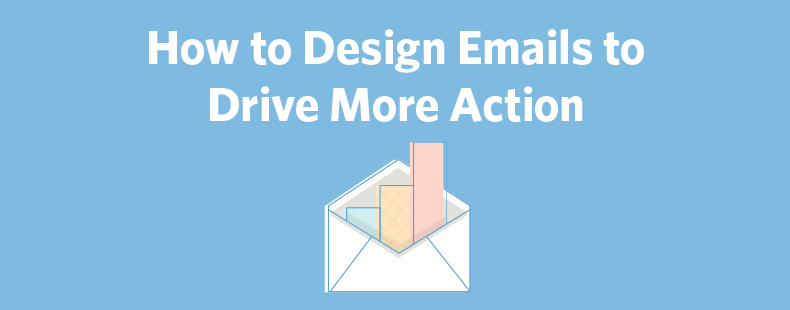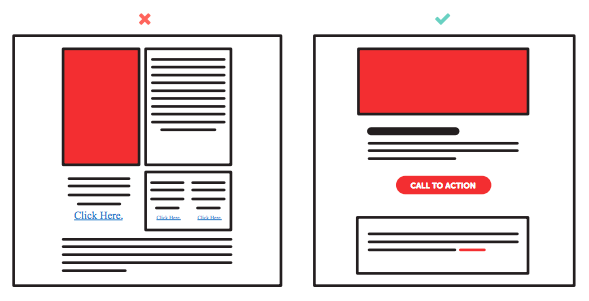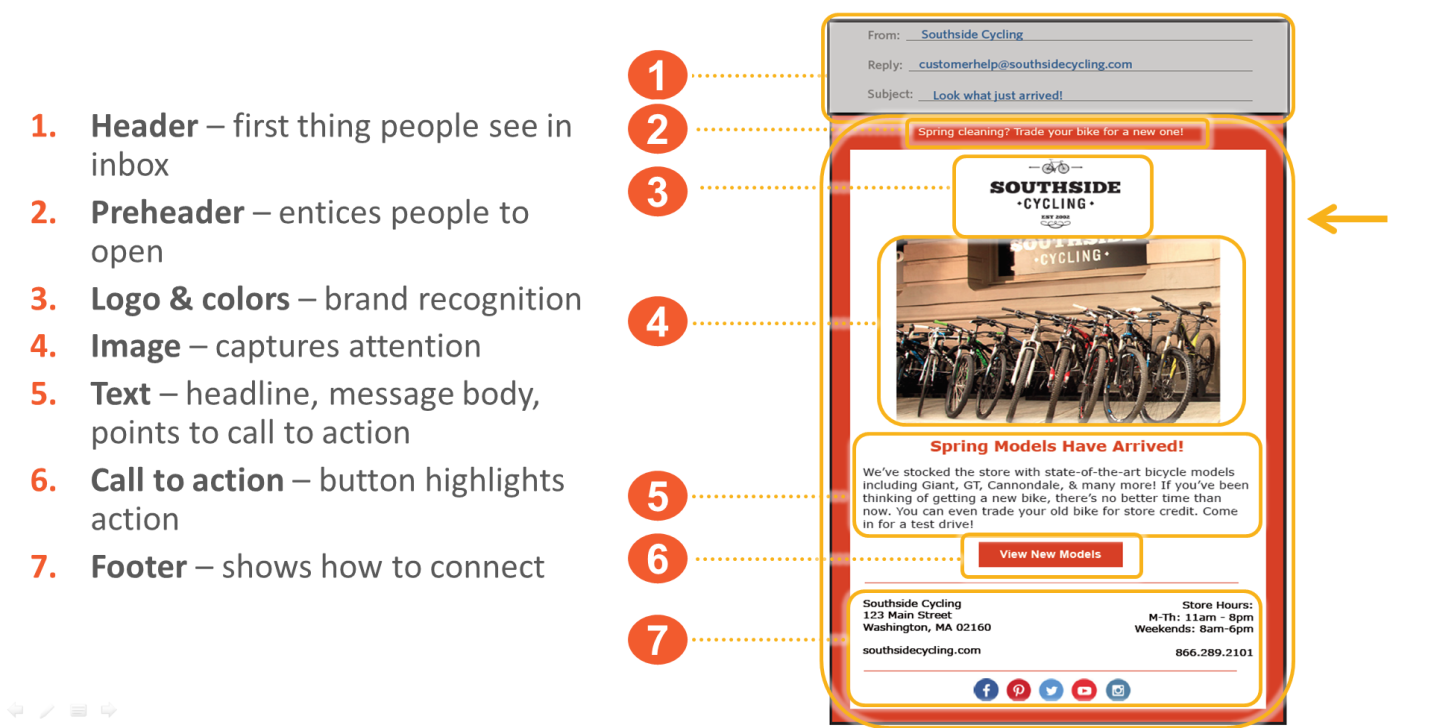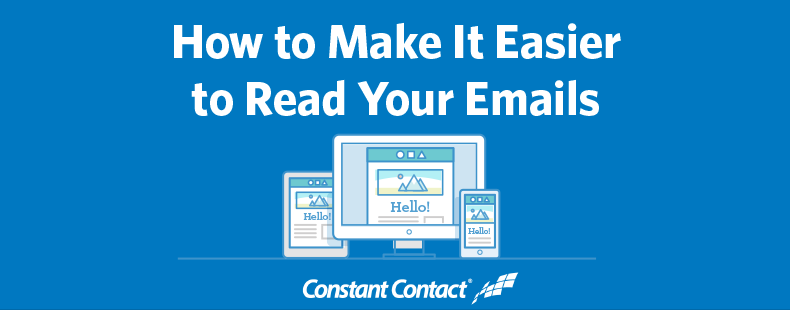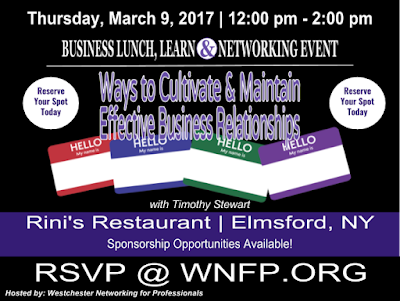If you aren't using email marketing as a way to connect with current and potential customers, you are missing out on a huge opportunity to build brand awareness and loyalty.
In addition to being an effective communication tool, email marketing also offers a tremendous return on investment. Research shows that for every $1 your business spends on email marketing, you earn $38 back.
If you plan to start taking advantage of email marketing in 2017, the first question you have to ask is whether you want to do it yourself, or hire a marketing firm to do the work for you?
To better answer that question, it is important to have a clear understanding of exactly what email marketing is, how you can use it to your advantage and the pros and cons of doing to yourself or having someone else do it for you. Here's what you need to know:
Understanding Email Marketing
- Email marketing is essentially the online version of direct mail. Instead of sending fliers and coupons to a customer's home, email marketing sends those same items digitally to a customer's inbox.
- Whereas the impact of direct mail can be difficult to track, email marketing lets businesses see exactly who is opening their mail and which emails are leading to sales.
- Businesses can use email marketing in a variety of ways, from building brand loyalty and finding new customers to encouraging loyalty and repeat business.
- With email marketing, you have a choice of do-it-yourself software or full service agencies that do all of the work for you. You can read more about the differences between the two below.
What the experts say: "Email marketing is one of the most effective methods of direct communication between a brand and its customers," said Seamas Egan, manager of revenue operations for Campaigner. "It is the leading generator of ROI over any other type of direct marketing and can be used for multiple use cases, including promotions, informational content, social sharing, relationship management and more."
Editor's Note: looking for information about email marketing software? Use the questionnaire below and our vendor partner will contact you to provide you with the information you need:
Pros and Cons of Email Marketing
- Email marketing offers businesses several advantages over other types of marketing strategies. Cost is a key differentiator, as email marketing doesn't require any printing or postage fees. Using email marketing software, it typically only costs businesses several pennies to send out an email, as opposed to at least 15 cents per piece of direct mail.
- With email marketing, businesses can see which emails were received, which ones went to addresses that were no longer active, which ones were opened, which ones were deleted before they were read and which ones enticed clients to click through to the website and make a purchase.
- The main drawback to email marketing is that some consumers may consider the emails to be spam and hold it against a brand's reputation. If customers feel they are being bombarded by unwanted emails from a business, they will be less likely to become new or repeat customers.
What the experts say: "Email marketing is a cost-effective solution that gives a business the power to reach customers in a meaningful way in a place where people spend a lot of time — their inbox," said Ron Cates, director of digital marketing education for email marketing software firm Constant Contact. "Small businesses typically don't have vast marketing expertise or big budgets, making email the perfect marketing solution."
Types of Email Marketing
Businesses can go in a variety of different directions when using email marketing. The various types of messages businesses can send out via email marketing include:
- Newsletters: A quick way to regularly keep customers informed on any business news or upcoming promotions. Newsletters are typically sent on a recurring basis, such as every week or month.
- Promotional campaigns: These emails let customers know about upcoming sales. These emails can be sent in the days leading up to the sale, as well during the sale, as a reminder for customers.
- Invitation emails: This kind of message keeps clients up to date on upcoming special events. Invitation emails can be sent weeks or days before an event occurs as a way to encourage a customer to attend.
- Catalog emails: Sent as a way to highlight products or services.
- Lead-nurturing emails: Designed to keep brands at the top of mind for prospective clients. These emails are sent out regularly until a potential customer is converted into a paying customer.
- Survey emails: Sent as a way to find out more about customers' needs and wants.
- Transactional emails: Sent after a purchase is made, as a way to confirm the transaction, say thank you and encourage the customer to shop with you again.
Now that you have a better idea of what email marketing entails and how it might benefit your business, the next question you need to answer is if you want to handle the process on your own, or hire a dedicated agency to do all of the work for you.
Email Marketing Software
- Email marketing is offered as a software-as-a-service (SaaS) from a variety of vendors.
- Email-marketing software provides businesses with all of the tools needed to create and execute email-marketing campaigns. This includes templates to get started, design tools to develop eye-catching messages and contact-management solutions to collect and store customer email addresses.
- Once you create the message and decide whom you want it sent to, the software provider then sends out the emails for you from its own servers.
- The software features a variety of analytics that monitor what happens with your emails to help determine the success of each campaign and how you can improve your campaigns in the future.
Cost: While some providers have a pay-as-you-go option, the majority offer monthly plans that are typically based on the number of contacts you are sending emails to and how many campaigns you plan to run each month. Costs can range anywhere from $10 to $15 to send emails to 500 contacts a couple times a month, to $4,000 to send out 4 million emails a month. You can see our email marketing best picks here.
Pros and cons: The largest advantages of email-marketing software are that you can do it all on your own for a relatively low cost. The tools make it easy for those without any type of HTML or design experience to create and execute a variety of email-marketing campaigns. You are also provided with an assortment of data to determine if the campaign was a success. The downside of email marketing software is that you are, for the most part, on your own with it. While most vendors provide support options, getting it designed and sent out in a timely manner ends up falling on your shoulders.
Best for: Small businesses that don't want to spend a ton of money on marketing but that have the personnel to complete the work when needed.
Email Marketing Firms
- These are fully staffed marketing agencies that work with you to create an email-marketing strategy that best suits your business's needs.
- The agency's staff then works to create email campaigns that align with your overall strategy. The firms take care of all the design work and deployment.
- The agency also handles all contact-management needs, which includes building your distribution list and making sure it's always current.
Cost: The cost of these services is typically dependent on how in-depth your strategy is and how many campaigns you want to run each month. The monthly cost can run anywhere from several hundred to several thousand dollars.
Pros and cons: The biggest benefit of email-marketing agencies is the experience they bring to the table. While using email-marketing software typically requires a trial-by-fire approach to determine what works and what doesn't, email-marketing agencies already have that knowledge. They can craft messages with proven records of success. The biggest downside is the cost. These agencies typically cost at least 10 times the price of email-marketing software.
Best for: Large businesses that have the money to pay for these firms, but don't have the time to take care of it all on theirown.
Now that you know the basics, you might be ready to make some decisions. If so, check out our best picks for email marketing software.
Email Marketing FAQ
Still not sure if email-marketing software is right for you? No problem. Here are same questions and answers that may help you come to a decision.
Q. Is it really feasible for someone without any marketing experience to become competent at email marketing?
A. While you might not hit a home run your first time out, email marketing software provides you with everything you need to eventually become successful. The software offers a wide range of design tools, such as templates and samples, to help you create emails, contact-management solutions to help manage and grow your distribution list, and the analytics to determine if what you're doing is working.
"Most small business owners wear multiple hats within their company, such as founders, marketers, accountants, recruiters and more," Egan said. "Email marketing offers them a way to build brand awareness and foster valuable customer relationships without having to invest significant resources in outside marketing activities."
Q. How does the software help you grow and maintain your contact lists?
A. Email-marketing software provides a variety of tools to help you obtain and manage email addresses from your customers. Most software options integrate with your current email address book to get your list started and offer the ability to embed sign-up forms into your website and social media accounts as a way to grow your contacts.
Once you run a campaign, most software solutions have automatic tools that keep your list up to date by removing inactive addresses, as well as those customers who chose to unsubscribe from your emails.
Q. What types of analytics does email-marketing software provide?
A. One of the biggest reasons email marketing is so popular with businesses is that you can track its success. The details that are typically provided include which emails are opened, which are immediately deleted, which are forwarded to others and which lead to actual sales.
You can also drill down into the data even more by looking at the days and times emails are being opened, and the types of customers — male, female, old, young, etc. — who engage with your emails most.
All of this information helps increase the success of future campaigns.
"Email marketing software helps [businesses] understand their audience's response, enabling them to plan their next marketing move," Cates said.
Q. Can you use email marketing in conjunction with social media?
A. Yes, almost all email-marketing software allows you to take advantage of the social media following you've built. Most of the providers give you the ability to connect your campaigns with your Facebook page and Twitter feeds, so your emails are automatically posted to those sites. In addition, the software lets you collect email addresses for your contact list via Facebook with pre-built sign-up pages.
You can also get data on whether or not email campaigns are resonating on social media by looking which messages are being liked and shared on Facebook or re-tweeted on Twitter.
Q. Besides the design tools, analytics and social media integration, what are some of the other features that email-marketing software offers?
A. Email marketing software provides a wide range of valuable tools and features, including:
- Automation: This allows you to create workflows for when certain events occur. Examples include messages that are automatically sent each time a new email address is added to your distribution list or when a shopping cart is abandoned.
- Personalization tools: This gives you the ability to send out different emails to different types of customers. For example, a retailer might create a campaign to highlight its new men's and women's clothing line. However instead of sending the same message to everyone, the retailer can send women emails that feature dresses, blouses and skirts, and men emails that highlight slacks, polo shirts and socks.
- A/B testing: This tool allows you to test out alternate emails to see which ones are more popular with your customers. Whether it's different subject lines, photos or messages, this feature helps you create campaigns that have the best chance to succeed.
- Inbox preview: Many services let you see exactly how an email looks within various emails clients, such as Outlook or Gmail, as well as on different mobile devices. This allows you to make sure your designs look the same regardless of where they're being viewed.
- Spam filters: This helps ensure your emails actually make into your customer's inbox and don't get stuck in a spam folder. This tool examines each email's subject line, links, images, etc. If a certain aspect of an email is causing it to be sent to spam folders, you will know ahead of time and be able to change it before launching your campaign.
- Mobility: Most providers offer mobile apps that allow you to create and monitor campaigns all from your smartphone. Some apps also give you the ability to keep tabs on your distribution list.
Q. Does the software integrate with any programs I am already using, such as Salesforce?
A. Yes. Nearly all email-marketing software integrates with at least some popular business applications. The most common integrations are with Salesforce, WordPress, Shopify and Magento.
These integrations save you time and resources by automatically transferring content between your programs and email marketing software.
In addition, some providers also let you to tap into their application programming interface (API) to build your own custom integrations.
Q. What if I'm having trouble with the software? What kind of help is available?
A. Whether it happens when you're designing an email, managing your contact list or deciphering the analytics, inevitably there will come a time — since you're basically handling everything on your own — when you'll need some help. When those times arise, most software providers give you the ability to speak or live-chat with an expert directly. Rather than having to send an email and wait hours or days to get your questions answered, you can call the service provider or use an online live-chat tool to immediately talk through the problems you're experiencing.
"Given that most small business owners are time starved, the availability of free support, both on the phone and online, is a real bonus," Cates said.
Additionally, most providers have an extensive knowledge base of user guides, videos and white papers that provide the ins and outs of the software and how each feature is used.
Q. What should I be looking for in an email-marketing software services provider?
A. Making sure the software is going to actually get your email delivered is one of the most critical aspects of any service. It's important to take note of a provider's deliverability rate and its process to avoid spam traps, said Jess Knight, a senior communications manager for iContact.
"Sending the best-looking email in the world doesn't matter if it never reaches the inbox," Knight said.
Personalization and automation are also critical features small businesses should be looking for.
"Based on their specific needs, most small businesses should seek a platform that delivers an easy interface for personalized, one-to-one customer communications, including advanced personalization and segmentation features like A/B split testing, engagement scoring, dynamic content and triggered messaging," Egan said.
Now that you know more about email-marketing software, you have to determine which provider is best for you. To help you narrow down your choices, we encourage you to check out our best picks for various types of businesses, as well as our complete vendor list if those suggestions don't fit your needs. A roundup of our best picks, our reasoning for picking each and our thorough email-marketing software services provider list can be found on our best picks page.
Source: http://www.businessnewsdaily.com
Image Credit: Shuttershock
ABOUT WNFP
Westchester Networking for Professionals (WNFP) is a business networking association dedicated to helping small businesses and entrepreneurs develop, expand and grow. We offer affordable opportunities to help create a positive impact and advancement in your business interests and personal quality of life to take you to the next level.
Stay Connected with WNFP!

